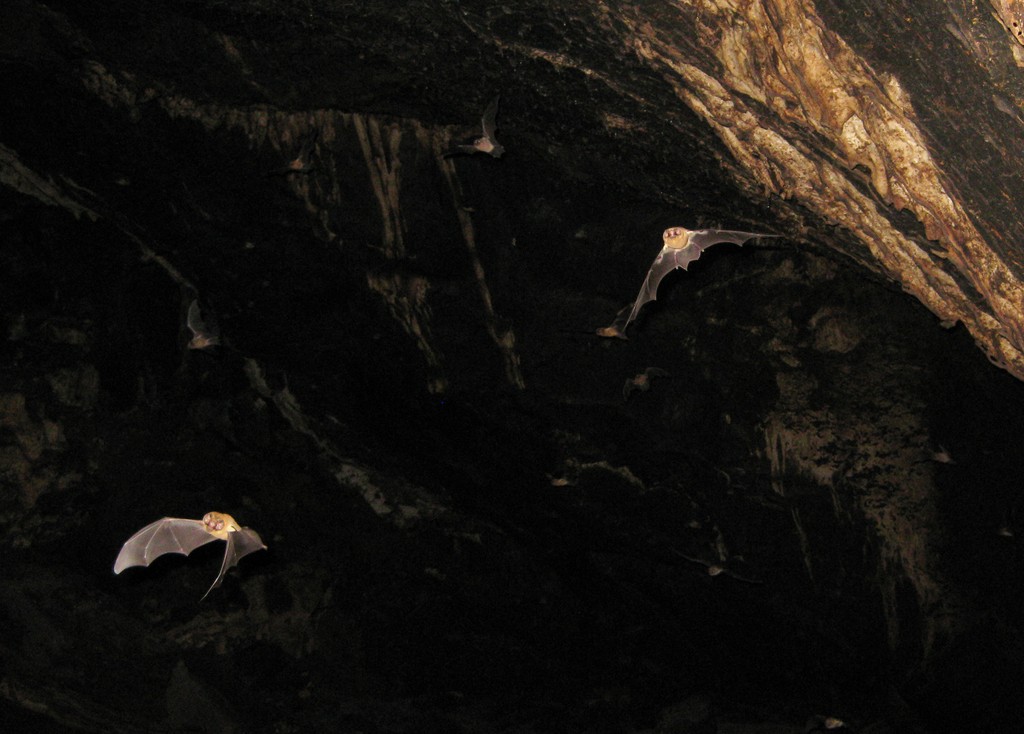Ghost-faced bat
A species of Ghost-faced bats Scientific name : Mormoops megalophylla Genus : Ghost-faced bats
Ghost-faced bat, A species of Ghost-faced bats
Scientific name: Mormoops megalophylla
Genus: Ghost-faced bats
Content
Description General Info
Description
The ghost-faced bat is of medium size with a reddish-brown to dark-brown appearance. The reddish color becomes more prominent as the pelage ages. This particular bat undergoes molting, usually between June and September. On the dorsal side, molting starts on the shoulders and spreads over the back, whereas on the ventral side molting usually begins under the wings, on the neck and chin and then spreads down across the abdomen. The faces of these bats have a 'smashed-in' appearance. This odd appearance is the result of four combining factors; they do not have well-developed noses, their foreheads rise abruptly from their noses, their faces are composed of very thick dermis and muscle fibers, and they have large, round ears that seem to join across the forehead. These bats maintain an unusually high body temperature, usually a few degrees higher than the ambient temperature. As a result, they are sensitive to temperatures under 10 °C and can only survive in these colder temperatures for a few hours before they succumb to hypothermia. 
General Info
Lifespan
20 years
Diet
Ghost-faced bat maintains characteristically insectivorous feeding habits, largely relying on moths for nourishment. Its diet further reveals a preference for beetles, mosquitoes, and various arthropods, illustrating a diverse consumption pattern.
Appearance
Ghost-faced bat is a medium-sized bat with a stocky build. Its skin is dark brown to black and is nearly hairless. The wings are long and narrow, and its tail is enclosed in a large membrane. Notable features include a leaf-shaped, slightly upturned nose, large ears, and a chin without a cleft. There are no significant differences in appearance based on age, gender, or subspecies.
Behavior
Ghost-faced bat is a social, nocturnal creature. Renowned for its vocal communications, the species remains in large, close-knit colonies, in tropical and subtropical caves. Displaying singular grooming and flight rhythms, ghost-faced bat relies on echolocation for hunting insects at night. Its strong homing instinct facilitates return to the same roosting site each day.
Population
Decreasing
Scientific Classification
Phylum
Chordates Class
Mammals Order
Bats Family
Mustached bats Genus
Ghost-faced bats Species
Ghost-faced bat 